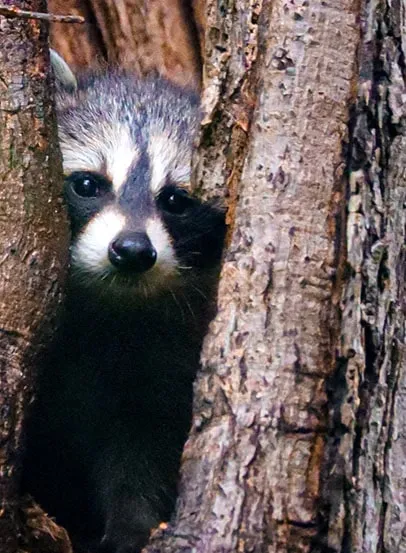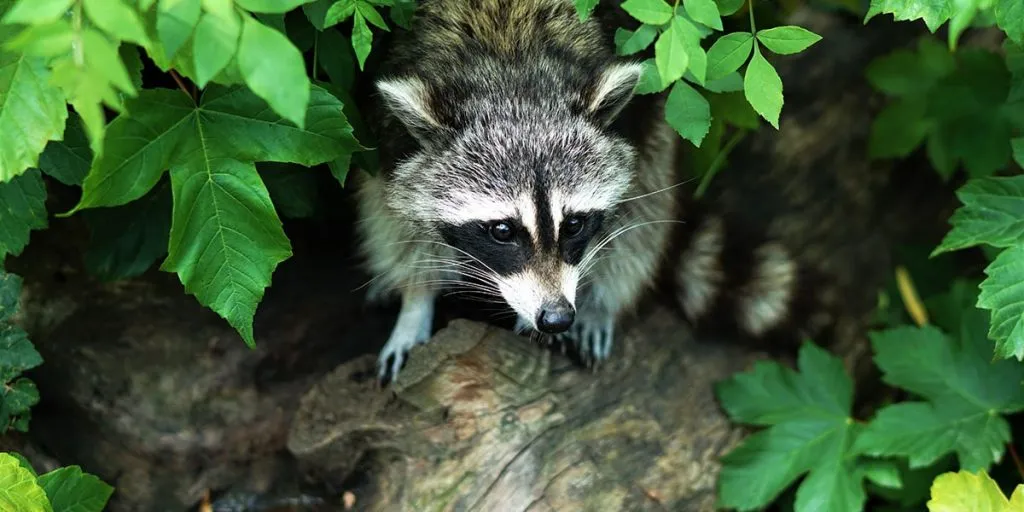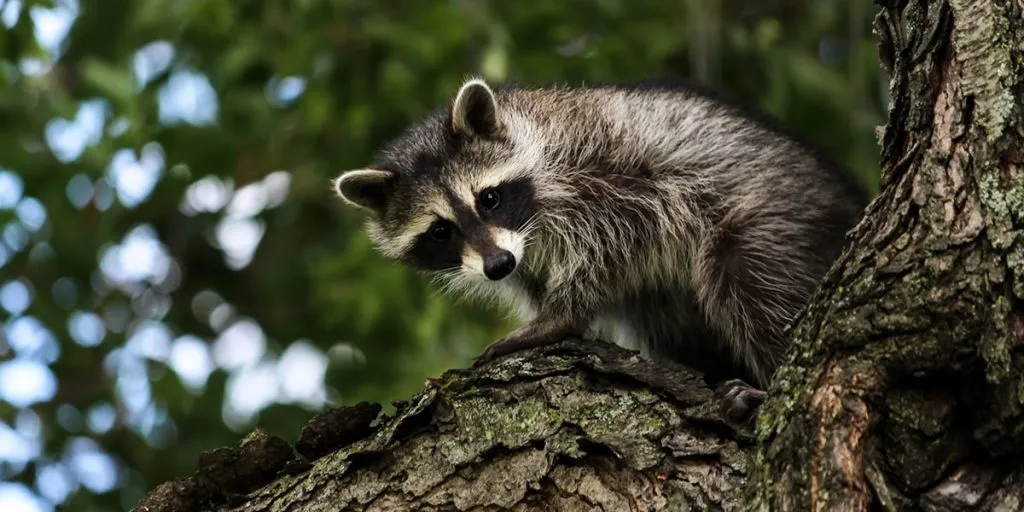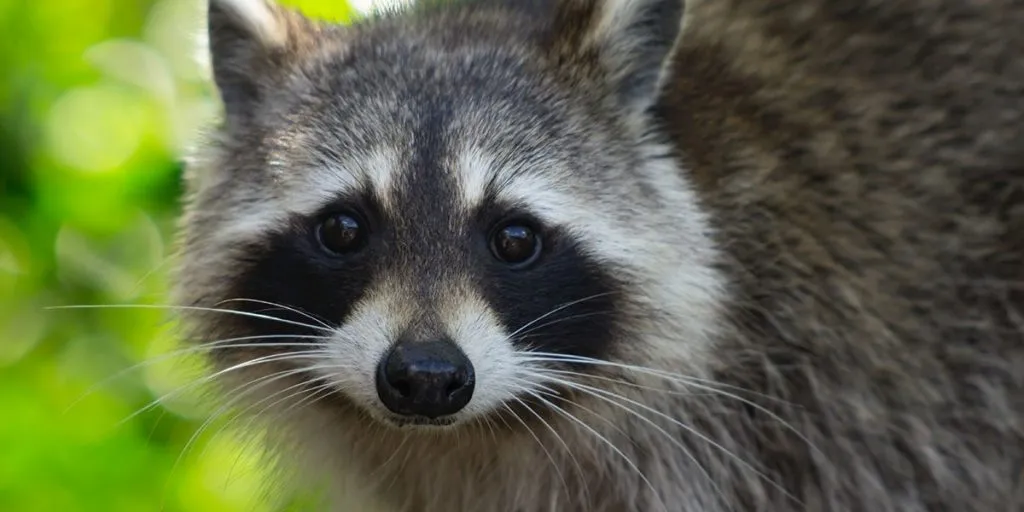You might already know that a raccoon is a great tree climber, but you’d still like to learn if they sleep in a nest up there, or perhaps do something else. How raccoons live is actually quite different from what most people think.
Scientists observing the behavior of wild raccoons found that the animals will occasionally live and sleep in trees, if given the opportunity. A raccoon will make a nest in tree hollows, or use the tree to access a nest that is located higher up from the ground.
While raccoons can have nests up in a tree, they will sleep in many different nests at once. A raccoon that is not nesting or sleeping through the winter will often use multiple dens at once for sleeping.
Why Do Raccoons Sleep In Trees?
The main reason a raccoon will sleep in the hollows and cavities of trees is to avoid predators. A raccoon will also choose the safety of a tree for protection against the elements. However, raccoons sleep in many different locations at once and a tree is only one of them.
It is more common for a raccoon to sleep in a tree in a natural, foresty, and non-urban environment. However, the animals will sometimes also choose to sleep in a tree in your backyard.
Remember that raccoons are nocturnal animals and will sleep during the day. So if you’re looking for a nest of ‘trash pandas’ in a tree in your backyard, the daytime is your best shot. During the night, a raccoon will leave the safety of the tree to scavenge for food in the area.
Raccoons Love Climbing
Right after the mother lovingly nudges her young out of the nest, the battle with gravity starts. Instinctively, young raccoons will be able to use their sharp nails to move around on the bark of any tree.
Before you know it, youngsters climb up and down the whole forest like there is no tomorrow.
These animals are built for climbing and they absolutely love doing it. Climbing doesn’t only allow a raccoon to access more food, it will also keep them safe from any lurking dangers in the area.
Unless a raccoon is injured or physically stuck, the animals are fully capable of climbing up and down any tree. Raccoons do not need help to get down a tree or telephone pole. It’s more likely that they’re cautious of people.
Do Raccoons Make Nests In Trees?
More often than not, a raccoon will make a nest in a tree. A raccoon prefers to make its nest in trees with cavities or hollows and a relatively small opening (less than 3 inches in diameter). They will also steal nests from birds or other tree-dwelling mammals.
Despite the fact that the animals look a bit chubby, they manage to squeeze their bodies through very small openings. They will absolutely scare away large birds like ducks or owls and steal their tree nest.
However, they will stay away from predatory birds that are known to eat raccoons, such as North American-native great horned owl.
In (sub-)urban environments, they will gladly occupy a tree in someone’s backyard. They also use trees to access roofs and attic spaces, especially in wintertime. The relative warmth of the houses attracts them and helps them survive the colder winter months. This makes them a common pest for a lot of American households.

How To Get A Raccoon Out Of A Tree
If you’ve stumbled upon a raccoon in one of your own trees, removing it is usually the best course of action. Raccoons can be dangerous to both humans and their pets in multiple ways. Not only are they likely to carry the rabies virus, but they also tend to have a destructive nature.
In search of food and shelter, these furry animals won’t just damage your trees but also your house.
To successfully get a raccoon out of a tree, here are some practical tips:
- Block off tree hollows: If the animals are nesting in the tree, you’d want to get some pieces of wood and actively block off the cavities. Make sure you don’t leave any holes larger dan 2 inches in diameter. They will be able to squeeze themselves through. Make sure your structure is fully raccoon-proof. They are highly intelligent critters that will simply remove a structure that is too ‘weak’.
- Let them come to you: It is illegal to hurt or harm raccoons under multiple animal cruelty laws. That’s why it’s essential to lure and trap the animals, instead of killing them. Use a Havahart trap like this, and set some bait out in the yard. At night, they should grab it in no time.
- Remove food sources: If there is no food, there is no raccoon. Block off garbage cans, feed your cats indoors only, don’t feed the wild animals, and make sure no food is accessible outside at all. Especially if you’re living on a farm, it’s important to remove feed before nightfall.
- Use scent to your advantage: Raccoons hate the smell of Epsom salt, onions, peppermint oil, as well as garlic. They also hate cougar urine, mainly because they associate it with danger. These scents are a deterrent to keep the raccoons from coming back.
- Contact raccoon removal: Most ‘normal’ pest control companies are not allowed to deal with raccoons. So make sure you find a professional and experienced removal service in your local area. They can give practical advice, but they won’t solve your problem overnight. They will simply do the job of setting traps and deterrents for you.
Dealing With Raccoons In Your Trees
Having a raccoon living in one of your backyard trees definitely is a problem. Like we mentioned before, the animals are destructive. They’re also dangerous to your livestock, pets, as well as children. A raccoon can be especially aggressive when food is involved.
If you spot a family of trash pandas lurking around your yard, it’s best to take action right away.
Raccoons can be removed and relocated according to local and state laws. Follow the appropriate guidelines for this process. Get the information by calling your local animal control service. If the animals pose an immediate threat, you can also call your local police department.



